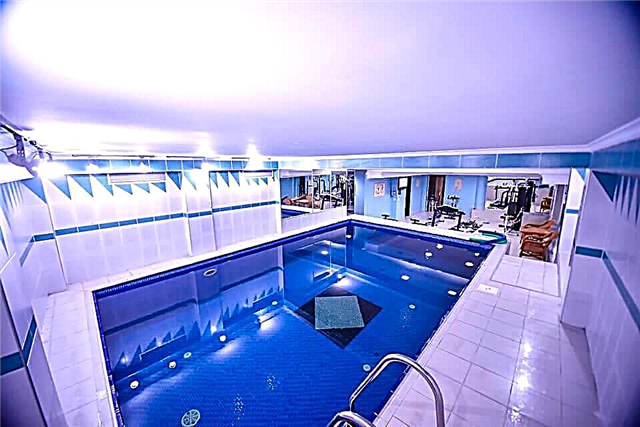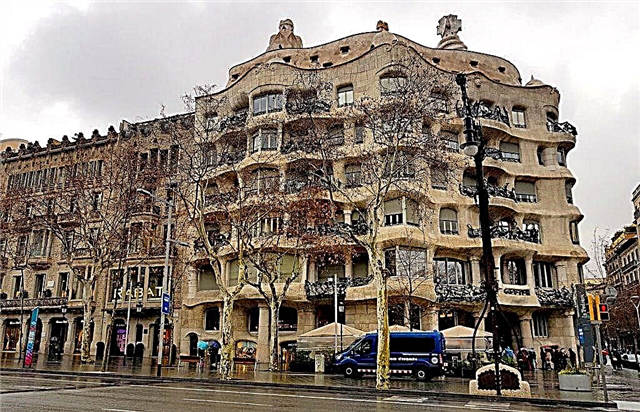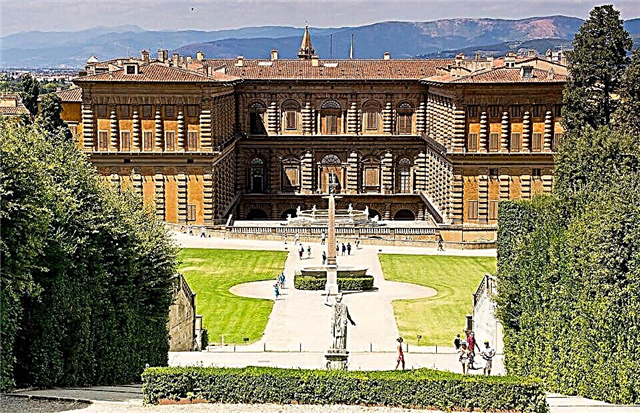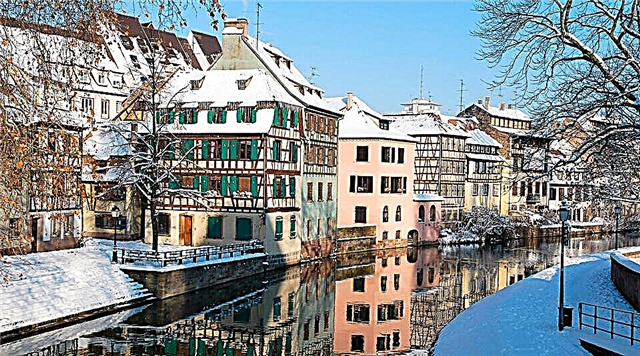Rome, or as it is called, the Eternal City, is rich in its attractions. Historical monuments are carefully protected by the state and are open to all people who are interested in antiquity. One of the significant places is the Pantheon - a functioning temple and burial place of great people.
Construction history
The meaning of the word Pantheon is “a temple dedicated to all gods”. The first building of the Pantheon was built by Marcus Agrippa, the Roman consul. It was erected in memory of the victory over the army of Anthony and Cleopatra. The pantheon of Agrippa was surrounded by a small round square, paved with slabs, opposite was the temple of Neptune. In the first centuries of its existence, the building was often on fire. Around 110, it was almost completely burned out in a severe thunderstorm. In 126 A.D. Emperor Hadrian rebuilt the magnificent and majestic temple. From the previous building, only a few fragments remained - 16 columns, a portico in the front and an inscription in the upper part of the pediment, stating that this building was erected by Mark Agrippa.
In 202, during the reign of Emperor Septimius Severus, the building was restored, and Karakala, the son of the ruler, also took part in this. Basically, the walls were finished and cladding works.
From a pagan temple to a Christian one

The building of the Pantheon is well preserved due to the fact, as scientists believe, that it was used for its intended purpose - it has always been only a temple. The first building of the Pantheon was intended for the Romans who were not yet Christians and prayed to their pagan gods. Here they made offerings - they burned sacrificial animals on the altar, which was strictly under the dome. Agrippa owns an innovation that is of great importance for believers, breaking the age-old tradition. In ancient Rome, this became the first cult building where not only priests, but also ordinary citizens could be. Before Agrippa, all ritual activities were performed in open areas. The emperor ordered to build a building in the form of a triumphal arch and each person, entering it, himself became a “triumphant”.
In May 609, the temple was consecrated, it became a Christian shrine, named after St. Mary and the Martyrs. This event took place when the Byzantine emperor Phoca gave the church for the use of Boniface YI, who converted it to Catholic. After the transformation of the Pantheon into a Christian church, the attributes of paganism were removed: all pagan sculptures were knocked down and removed from the pediment. They were replaced by statues of Christian saints. The walls were decorated with paintings based on scenes from the Bible.
In 655, the emperor of Constantinople, Constantine, ordered the removal of some metal fragments and gold-plated tiles from the temple. From that time on, the church gradually began to fall into desolation. The Pantheon was revived in the 8th century under Pope Gregory III, when he consecrated the chapel of St. Peter. The event took place on November 1, this day is now celebrated as All Saints Day.
Architecture and architect

The Pantheon is famous for its majesty and integrity, it is unique in its compositional solution. It consists of figures of geometry - a hemispherical dome, a portico in the form of a parallelepiped and a rotunda in the form of a cylinder. The building was built of concrete and brick, covered with a hemispherical dome with a diameter of more than 43 meters. The portico is decorated with two rows of columns that add volume to the structure and make it more graceful. The walls of the rotunda are 6 m thick and are installed on a foundation more than 4 meters deep. The dome and walls form a single whole, supporting the entire interior space. Niches adjoin the temple, separated from the main building by Corinthian columns.
140 caissons are located high under the dome (recesses on the ceiling on the inner surface of the arch, used to improve acoustics, and for artistic treatment). Carved grooves decorate and lighten the weight of the caisson. Scientists examined the markings of the bricks used in the construction and concluded that the work was carried out under the guidance of the outstanding architect of antiquity, Apollodorus of Damascus. The building is unique for that time, until the 19th there was not a single structure with domed architecture of the same size, let alone surpassing it in size.
Pantheon outside and inside

For the exterior decoration of the building, the builders used 16 columns. They are made of granite imported from Egypt and Greek marble. The dome hemisphere is covered with gilded plates. Beautiful and majestic seven-meter gates made of bronze, preserved from antiquity. The ancient architects wanted to make the interior decoration the most magnificent, so that it amazes a person. The interior walls and flooring are in ocher marble with white splashes. The walls are two-tiered, the columns draw attention to the dome, giving harmony to the entire structure.
Inside the hall, along the perimeter of the walls, there are seven niches that add variety to the interior, one of them plays the role of an entrance, while the others contain statues of Catholic saints. At the entrance there are sculptures dedicated to the founding fathers Agrippa and Adrian, the builders of the Pantheon. The square in front of the entrance to the temple is beautiful; here you can admire the ancient Egyptian Obelisk, which was installed during the Renaissance. The fountain completed the composition in the 11th century.
Dome

The dome is divided into clearly visible circles. Historians believe that it used to be decorated with stars and flower rosettes, but no evidence of this has been found. In the center of the dome, the hole is the oculus, its diameter is 9 meters. There are no window openings in the building and light enters only through it. Since the hole is not closed during rain, the building is equipped with a drainage system. Engineering calculations are made in such a way that raindrops do not interfere with the flow of warm air when it moves up. The dome is a perfect hemisphere, occupies almost half of the volume of the entire building, and is decorated with a bronze border.
At noon, a column of bright light entered the church through the dome, illuminating the entire space. According to legend, the hole was formed during the service. When the divine music sounded, the dark forces that penetrated the building could not withstand the sounds of the liturgy and rushed upward with a howl. Having destroyed the ceiling, they disappeared forever from this sacred place for believers.
What's the hole in the dome for?
Ancient builders erected a temple for cult rituals, so the hole in the center was made on purpose, it is called the “eye” and is a symbol of the Sun. For practical purposes, it is created so that the smoke when burning sacrificial animals freely passes through the hole - the oculus. According to pagan religion, it was believed that along with the smoke all prayers reach the gods more easily, they quickly accept offerings and fulfill their requests. An interesting hypothesis was put forward by scientists, they are sure that the eye is a sundial. Throughout the year, the Sun enters the temple from different angles and its rays penetrate into different areas. April 21 (the day of the founding of Rome) the main entrance is illuminated.
A person entering the room found himself in the bright rays of the luminary, it was a majestic, bewitching and symbolic sight. According to one version, the architecture of the temple prompted Copernicus to the theory of the heliocentric structure of our universe. After that, the scientist proved that the Earth is not the center of the universe, it revolves with other planets around the Sun. On the fiftieth day of Easter, an extraordinary action takes place in the church - rose petals of bright scarlet color fall on the parishioners from above through the oculus. This holiday is called Sunday of Roses.
Who is buried
World famous people are buried in the Roman tomb: representatives of art - artists, musicians, architects, as well as the royal family. The burial place of the outstanding painter Raphael Santi (died in 1520) is especially revered. His beloved bride Bibbiena is buried nearby. Painter Giovanni de Udine, architect Baldazare Peruzzi and other prominent people. Persons from the royal dynasty of Savoy are buried here.
One of the first to be buried in one of the chapels was Victor Emmanuel II - the first king of a united Italy. The temple houses the grave of his son and heir King Umberto I, who was shot by anti-monarchists in 1900. Buried nearby is his wife Margarita Savoyskaya, who died 36 years after the tragic death of her husband. The memorial is decorated with a burial urn designed by Sacconi.
Where is it located and how to get there
The Pantheon building is located in Piazza della Rotonda in Rome. How to get to the Pantheon:
- the best way is to take line A of the metro station, exit at Barberini station. You have to walk 700 meters to the entrance to the temple.
- can be reached by bus, routes 40, 60, 87, 492 to the stop "Argentina", walk less than 500 meters
- by tram route number 8
You can shoot in the Pantheon, admission is free, but you should adhere to the visiting rules:
- do not bring food and drinks with you
- dress appropriately
- turn off phones
The temple is open for visitors from 8:30 am to 7:30 pm. Sundays from 9:00 to 18:00. On holidays, the entrance is open for tourists from 9:00 to 13:00. The temple is closed on Easter and Catholic Christmas - December 25. The majestic and grandiose building of the Pantheon attracts the attention of all people on the planet. One of the few buildings that have survived almost unchanged to this day and give an idea of ancient Roman architecture.











